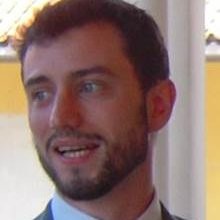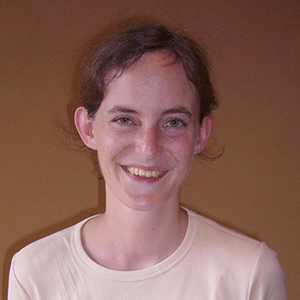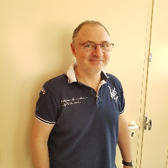Guests
 |
Lylian Challier
Laboratoire Détection Capteurs et Mesures - fremer
Titre : Biocapteurs électrochimiques & technique diélectrophorétique pour la surveillance du milieu marin.
Lylian Challier obtained his PhD in 2013 in electrochemistry, at the interface of biology, under the supervision of Professor Vincent Noel at the ITODYS laboratory of the University of Paris. Today, he is a researcher in the Sensor Detection and Measurement laboratory of IFREMER in Brest, France. He focuses his research on the biophysical characterization of microalgae by dielectrophoresis (DEP) in order to develop a tool complementary to cytometry. The ambition of this project is to propose a sorting system based only on morphological criteria of marine cells (i.e. unicellular microalgae), and to be able to probe the evolution of the chemical composition of these cells when they are subjected to environmental stresses. In parallel, he is conducting research for the development of in situ electrochemical biosensors for aquaculture as well as for the monitoring of microalgal growth in bioreactors.
|
 |
Institute of Microbiology, ETH Zurich
Session ___
Titre : Fluidic force microscopy: opening new avenues for single-cell analysis
Current single-cell technologies generally require cell isolation and lysis, precluding dynamic measurements, downstream functional analysis, or cell-cell interaction studies. Using fluidic force microscopy (FluidFM), which can be depicted as a miniaturized, force-sensitive pipette matching the scale of individual cells, we are developing approaches that enable selective perturbation and molecular profiling of single cells. These include spatial manipulations, adhesion forces measurements, targeted dispensing of biomolecules and nanoparticles intra- or extra-cellularly, and the sampling of cellular biopsies for molecular analyses. Notably, all these FluidFM-based methods make it possible to manipulate individual cells while preserving their viability and their microenvironment, with the potential to redefine the frontiers of single-cell analysis.
|
 |
Equipe Matériaux polymères aux interfaces, Laboratoire Analyse et modélisation pour la Biologie et l'Environnement, Evry
Session NanoBioArchitectures
Title : Nanopores in biodetection and understanding of biomolecules
Professor in biochemistry and biophysics at the University of Evry-Université Paris-Saclay, team leader of the Analysis and Modeling Laboratory for Biology and Environment, co-director of the DIM Respore and leader of the "sensing and self-healing" axis of RS2E, labex storex. The research activities of my team are mainly focused on biomimetic nanopores, from their synthesis, characterization, microfluidic integration. We study the dynamics of ions, biomolecules and nanoparticles in confined environments, we characterize and determine the size, conformation, sequence and chemical modifications of different species, such as peptides, proteins, polysulfides, etc., in relation to societal issues of health, biotechnology and energy storage. Another research activity of the team concerns the mechanical properties of model systems of membranes and living cells to understand normal and pathological cellular functions.
|
 |
Pr. GILLES SUBRA
Faculté de Pharmacie, Université de Montpellier
Session -
Titre : Sol-gel is a bioorthogonal process to get bioactive surfaces and biomimetic materials
Gilles Subra got his PhD in 1999 under the supervision of Professor Jean Martinez in Montpellier, France. He now leads his researches in the Institute of Biomolécules Max Mousseron (IBMM) France in the field of peptide science. His research topics are at the interface of chemistry and biology. He develops methodologies for solid phase and combinatorial chemistry for the generation of bioactive compound libraries but he also designs chemical tools for proteomics or pharmacology that facilitate detection and quantification in complex biological media by mass spectrometry. More recently, he is interested in the design of peptide-based materials and polymers by a bottom-up approach. He notably designs and utilizes hybrid-bioactive peptides and biomolecules bearing silanol moieties. The main applications concern the conception of multi-ligand nanoparticles for cancer targeting, the functionalisation of silicone medical devices and dressings. His most recent research is related to the design of biomimetic peptide based hydrogel used for 3D biofabrication and cell-based therapies.
Gilles is co-author of over 100 papers and 13 patents
|
|




